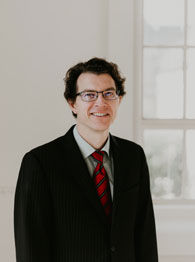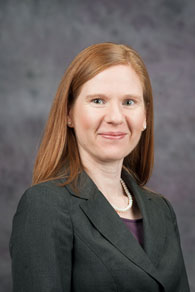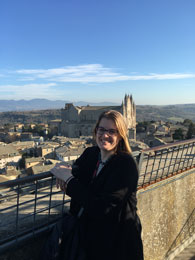Four K-State faculty honored for excellence in undergraduate teaching
Wednesday, April 29, 2020
MANHATTAN — Four Kansas State University faculty members are recipients of the 2020 Commerce Bank and W.T. Kemper Foundation Outstanding Undergraduate Teaching Award.
Douglas Dow, associate professor of art history; Jessica Heier Stamm, associate professor of industrial and manufacturing systems engineering; Katrina Lewis, associate professor of interior architecture and industrial design; and Doug Walker, associate professor of marketing, will receive the award and a $2,500 honorarium from Commerce Bancshares Foundation and the W.T. Kemper Foundation.
"For 25 years, Commerce Bank and the William T. Kemper Foundation have been proud to partner with K-State to recognize teaching excellence and honor four exceptional educators," said Shawn Drew, market president and CEO of Commerce Bank. "Our heartfelt thanks and congratulations go out to this year's recipients."
Dow teaches Survey of Western Art 1-Caves to Cathedrals, Survey of Western Art 2-Botticelli to Brooklyn and a range of upper-level courses related to his research specialization in Italian Renaissance and Baroque art history. Dow's teaching philosophy centers on keeping content comprehensible.
"When I teach the history of art, especially art from the pre-modern era at the introductory level, my goal is to make the objectives and meanings of the works familiar while at the same time remaining aware of the distance and difference between us and the people who made the objects," Dow said. "As an example, when an Egyptian ruler presents a sculpture of himself with a closed fist and an open palm, he is making a statement about the ruler's power — closed fist — as well as the ruler's mercy — open palm. These are qualities we admire in rulers today, so highlighting these themes makes a 4,000-year-old sculpture more familiar to my students."
Dow has also led several summer study-abroad programs in Italy. While the university's transition to remote teaching has presented an unprecedented challenge, Dow's strategy has been to retain as much of the format and rhythm of face-to-face instruction as possible and be generous with deadlines.
Heier Stamm is the Gisela and Warren Kennedy Cornerstone teaching scholar in the Carl R. Ice College of Engineering. She teaches undergraduate and graduate courses in operations research, supply chain engineering and humanitarian/public health logistics. Heier Stamm's teaching philosophy focuses on student success.
"My objectives as an educator are to help students become critical thinkers with sound knowledge of and experience with industrial engineering fundamentals, the ability to apply and extend this knowledge to solve problems in practice, and an awareness of the opportunity to make a difference with their work," Heier Stamm said.
Heier Stamm incorporates examples of both traditional and nontraditional applications into her courses to illustrate the breadth of the profession to students with broad interests and goals of their own. During the time of remote teaching and learning, Heier Stamm is using online message boards to foster student interaction and is clearly communicating her learning objectives and commitment to student well-being and success.
Lewis is director of Environmental Design and International Programs in the College of Architecture, Planning & Design, and serves as coordinator of the interior architecture and industrial design graduate program. She teaches Environmental Design Studio 1, Survey of the Design Professions, Environmental Design Studio Seminar, Study Abroad Orientation and Environmental Design Studio 2. Lewis' teaching philosophy and methodology have evolved from her experiences as a student, professional and a person who views the world as the greatest arena from which to be inspired.
"I consider myself a lifelong learner and traveler," Lewis said. "I find teaching is a process of discovery for all involved: Students learn from me, I learn from students, and students learn from each other. As an educator, I am committed to empowering students to be successful future professionals."
In the classroom, Lewis uses various teaching methods that challenge students, such as lecture format, demonstrations with visual aids, precedent studies, reviews of previous student work, assigned readings, studio discussions, student presentations, drawing demonstrations, creation and supervision of work, and small and large critiques. To assist her students adjust to remote learning, Lewis is using techniques such as encouraging students to work together on homework via Zoom, talking with her students about how she is handling the new way of teaching, and conducting online studio reviews.
Walker teaches Customer Relationship Management and Sports Marketing. His teaching philosophy includes motivating the class by showing a passion for the material and specifically demonstrating the value of the class to each student. Student engagement also is important to Walker, and he regularly provides interactive activities that have a direct payoff. In his teaching, he also allows for multiple opportunities to apply what students have learned using an experiential learning approach. With the switch to remote teaching, Walker is keeping his students engaged.
"My general approach for the transition to online has focused on encouragement, straightforward communication, careful organization — including a comprehensive Activities for the Week document posted every Monday — and immediate follow-up with personal emails," Walker said. "I commend the students. They have taken on the challenge of moving our class online and all appear to be doing well."




